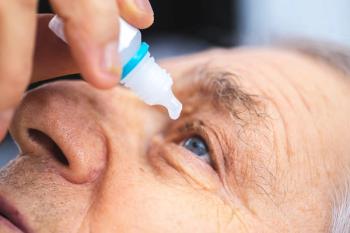
Viridian announces positive topline data from Phase 3 THRIVE trial assessing veligrotug in patients with active TED
Veligrotug is an intravenously delivered anti-insulin-like growth factor-1 receptor (IGF-1R) antibody.
Viridian Therapeutics announced positive topline data from its phase 3 THRIVE clinical trial (NCT05176639) of veligrotug, previously known as VRDN-001, in patients with active thyroid eye disease (TED).
Results showed that patients who received veligrotug, an intravenously delivered anti-insulin-like growth factor-1 receptor (IGF-1R) antibody, had “statistically significant and clinically meaningful improvements across [multiple] key disease endpoints at the primary efficacy analysis timepoint of 15 weeks.”1,2
Furthermore, THRIVE met both the primary and all secondary endpoints at 15 weeks after 5 infusions of veligrotug. Additionally, veligrotug showed a rapid onset of action, with the majority (53%) of veligrotug-treated patients achieving a proptosis response after just 1 infusion, or 3 weeks after the start of therapy.1
THRIVE enrolled 113 patients, with 75 patients treated with veligrotug and 38 treated with placebo.
Results showed a 70% proptosis responder rate (PRR) in patients receiving veligrotug, compared with 5% of patients receiving placebo (64% placebo-adjusted) (p < 0.0001), as well as a 2.9 mm mean reduction in proptosis from baseline in patients receiving veligrotug, compared with 0.5mm reduction in patients receiving placebo.1
Complete diplopia resolution was seen in 54% patients receiving veligrotug, compared with 12% of patients receiving placebo, with a 63% diplopia response in patients receiving veligrotug, compared with 20% of patients receiving placebo.1
The overall responder rate for those treated with veligrotug was 67%, while those treated with placebo was 5%. Veligrotug was also generally well-tolerated, with majority of adverse events (AEs) being mild. There was a low rate (4%) of discontinuations in the veligrotug arm, and no treatment-related serious AEs were reported.1
Michael Yen, MD, an investigator in THRIVE and Professor of Oculoplastic Surgery and Ophthalmology, at Baylor College of Medicine, commented on the safety profile of veligrotug in a press release from Viridin.
“Veligrotug showed a favorable safety profile in a large phase 3 clinical trial that closely monitored safety, including the potential for hearing impairment,” said Yen. “As a THRIVE investigator, I am excited to see these results and look forward to the REVEAL clinical trials for VRDN-003 to help bring additional potential treatment options for patients living with TED.”
The company noted that the phase 3 clinical trial arm of THRIVE-2, evaluating veligrotug in patients with chronic TED is ongoing, with top-line data readout expected at the end of 2024. Furthermore, the company stated it plans on submitting a Biologics License Application for veligrotug for the treatment of TED in the second half of 2025.1
References:
Viridian Therapeutics Announces Positive Topline Results from Veligrotug (VRDN-001) Phase 3 THRIVE Clinical Trial in Patients with Active Thyroid Eye Disease. Press Release; September 10, 2024. Accessed September 12, 2024.
https://investors.viridiantherapeutics.com/news/news-details/2024/Viridian-Therapeutics-Announces-Positive-Topline-Results-from-Veligrotug-VRDN-001-Phase-3-THRIVE-Clinical-Trial-in-Patients-with-Active-Thyroid-Eye-Disease/default.aspx A Safety, Tolerability and Efficacy Study of VRDN 001 in Healthy Volunteers and Persons With Thyroid Eye Disease (TED) (THRIVE). NCT05176639.
https://www.clinicaltrials.gov/study/NCT05176639?spons=Viridian%20Therapeutics,%20Inc.&rank=2&page=1&limit=10
Newsletter
Want more insights like this? Subscribe to Optometry Times and get clinical pearls and practice tips delivered straight to your inbox.








































